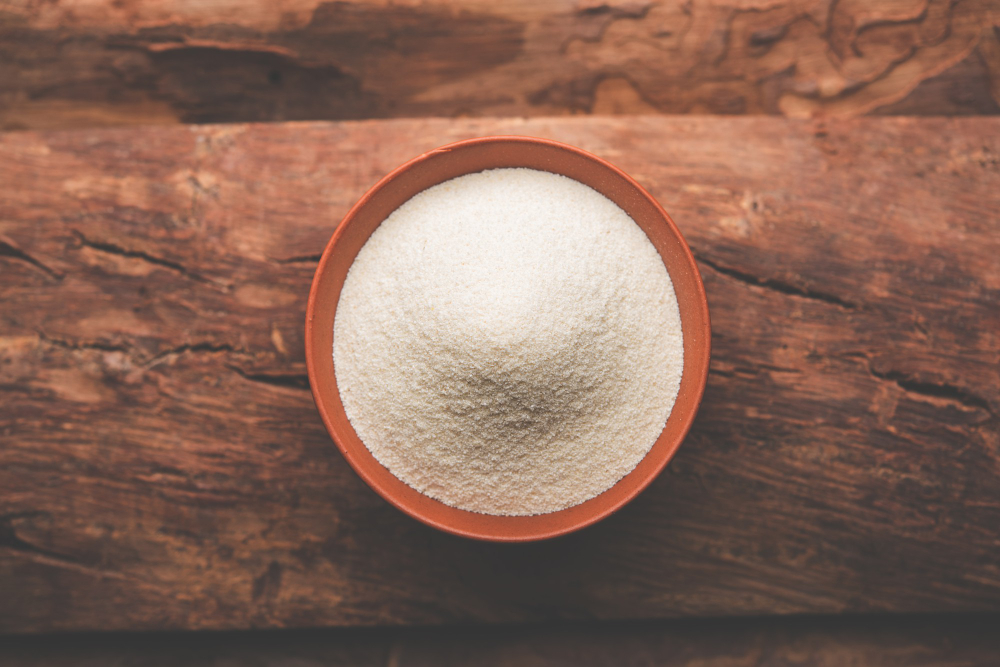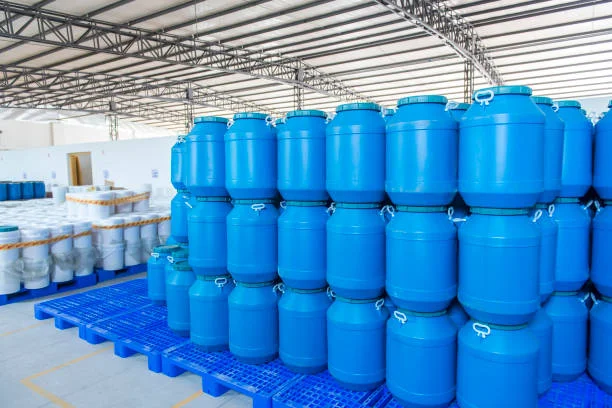Providing both home bakers and food producers with premium Xanthan gum, we at Innoveda Chemicals are a top Xanthan Gum-Food Grade Supplier in the UAE. We understand the importance of this unique ingredient in gluten-free baking, and in this blog post, we’ll explain its functionalities and explore how it can elevate your gluten-free creations.
What is Xanthan Gum?
Xanthan gum is a natural thickening and stabilizing agent derived from the fermentation of sugar with the bacteria Xanthomonas campestris. This process creates a polysaccharide (a complex sugar) with unique properties. Xanthan gum is a powerful thickening agent, requiring only a small amount to achieve significant viscosity. It also acts as an emulsifier, suspending liquids within other liquids and preventing separation.
These properties make xanthan gum an invaluable ingredient in gluten-free baking. Gluten, a protein found in wheat, barley, and rye, provides structure and elasticity in baked goods. When gluten is removed, these characteristics are lost, often resulting in crumbly, dense textures. Xanthan gum steps in to fill this void, mimicking some of the gluten’s functionalities.
How Xanthan Gum Benefits Gluten-Free Baking?
1. Improves Dough Structure and Elasticity:
Beyond just determining the texture, gluten plays a crucial part in producing the airy, light crumb that we adore in baked goods. This is due to its ability to trap and expand air bubbles during fermentation and baking. In gluten-free baking, replicating this structure is a challenge, but xanthan gum steps in as a valuable substitute. By mimicking gluten’s binding properties, xanthan gum fosters a more cohesive dough, enhancing its ability to hold shape and trap air bubbles effectively. This results in gluten-free treats with a desirable, light texture reminiscent of traditional baked goods.
2. Enhances Moisture Retention:
In gluten-containing baked goods, gluten plays a crucial role in moisture retention, contributing to their soft and moist texture. However, in gluten-free baking, this characteristic is often lacking, leading to a quicker drying out of the final product. Xanthan gum, renowned for its thickening capabilities, steps in to address this issue. By effectively binding water molecules within the dough or batter, xanthan gum enhances moisture retention. The result is a gluten-free baked good with a tender, moist crumb, reminiscent of its gluten-containing counterparts, making it a staple ingredient for achieving optimal texture and taste in gluten-free recipes.
3. Prevents Crumbling:
Gluten-free baked goods face a common challenge, crumbling texture due to the absence of gluten’s structural support. However, incorporating xanthan gum into recipes offers a solution. This natural thickening agent exhibits remarkable binding properties, effectively mimicking gluten’s role by creating a cohesive network within the batter or dough. As a result, the final product boasts improved structural integrity, making it easier to slice and handle without disintegrating. Xanthan gum acts as a vital ingredient, ensuring that gluten-free baked goods maintain their form and texture, delighting those with dietary restrictions.
4. Stabilizes Emulsions:
In gluten-free baking, ingredients like eggs and fats play crucial roles in texture and structure. However, without gluten to bind them, these components can separate, leading to uneven textures in baked goods. Xanthan gum, an emulsifier derived from sugars through fermentation, solves this issue by stabilizing the mixture. It forms a cohesive network that traps air bubbles, providing structure and moisture retention. This results in gluten-free treats with a smooth, even texture and improved shelf life, making xanthan gum a valuable ingredient in gluten-free recipes.
Using Xanthan Gum in Your Recipes:
Dosage:
The recommended amount of xanthan gum can vary depending on the recipe and the type of gluten-free flour blend used. A general starting point is:
- 1 teaspoon per cup of flour blend for pieces of bread and pizza dough
- ½ teaspoon per cup of flour blend for cakes and muffins
Tips:
- Start with a small amount: It’s easy to add more xanthan gum, but difficult to remove its effects. Begin with the recommended amount and adjust based on the consistency of your dough or batter.
- Stir thoroughly: Xanthan gum can stick easily. Ensure you stir it thoroughly with your dry ingredients before adding liquids to avoid lumps in your final product.
- Consider using a kitchen scale: For the most precise results, especially when dealing with small quantities, consider using a kitchen scale to measure your xanthan gum.
Beyond Baking: Xanthan Gum’s Versatility
While xanthan gum is a game-changer in gluten-free baking, its applications extend far beyond the kitchen. Here are some other uses of xanthan gum:
- Thicken soups, sauces, and salad dressings
- Stabilize ice cream and prevent ice crystal formation
- Emulsify ingredients in nut butter and jams
- Thicken gluten-free gravies and marinades
Looking for High-Quality Xanthan Gum in UAE?
At Innoveda Chemicals, a leading Xanthan Gum Food Grade Supplier in UAE, we offer premium Xanthan gum to elevate your gluten-free baking experience. Our xanthan gum is sourced from reliable manufacturers and undergoes rigorous quality control procedures.
Conclusion:
In the end, xanthan gum is a magical ingredient that unlocks a world of possibilities in gluten-free baking. From mimicking gluten’s structuring properties to enhancing moisture retention, xanthan gum empowers you to create delicious and satisfying baked goods. With its versatility extending beyond baking, xanthan gum is a valuable addition to any kitchen pantry.
Are you prepared to start baking without gluten? Contact our Innoveda Chemicals, your trusted Xanthan Gum Food Grade Supplier in UAE, to explore our high-quality Xanthan gum and discover a world of delicious possibilities.




